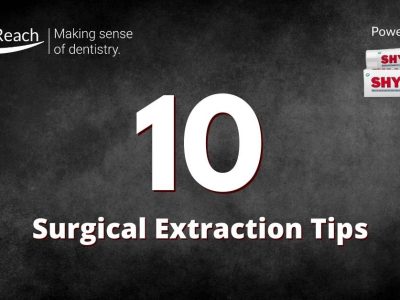Introduction
Bone grafting is a surgical procedure in which bone material is transplanted from one location to another within the same individual or between different individuals. It is an important technique in surgical dentistry, allowing for the restoration of lost bone tissue in the jaw, which can be caused by trauma, infection, or tooth loss. The purpose of this article is to provide an overview of bone grafting techniques, materials, and applications.
Keywords: Allograft, autograft, bone reconstruction, bone repair, calcium sulphate, ceramic, hydroxyapatite, implant, polymer

What are Ridge Defects?
Ridge defects are depressions or concavities in the alveolar ridge of the jawbone that occur due to the resorption or loss of bone tissue. This can be caused by tooth extraction, periodontal disease, or injury. Ridge defects can lead to functional and aesthetic problems, making it difficult to place dental implants or perform other dental procedures.
Reasons for Bone Grafting
The primary reason for bone grafting is to restore lost bone tissue due to ridge defects or other causes. Bone grafting can also be used to augment existing bone tissue, improve implant stability, promote bone healing, and enhance soft tissue regeneration.
Biologic Mechanisms of Bone Grafting
Bone grafting relies on the body’s natural regenerative capacity to form new bone tissue. The transplanted bone material serves as a scaffold for the migration and proliferation of osteoblasts, which are responsible for bone formation. Over time, the transplanted bone material is gradually replaced by new bone tissue, resulting in a functional and aesthetic restoration of the jaw.
Classification of Bone Grafts Based on Material Groups
Bone grafts can be classified into several material groups, including allograft-based, factor-based, cell-based, ceramic-based, and polymer-based bone graft substitutes.
A. Allograft-Based Bone Grafts
Allograft-based bone grafts are derived from human donors and can be further classified into fresh or fresh-frozen bone, freeze-dried bone allograft (FDBA), and demineralized freeze-dried bone allograft (DFDBA).
Fresh or Fresh-Frozen Bone
Fresh or fresh-frozen bone is obtained from cadavers within 24-48 hours of death. This type of bone graft has the advantage of providing intact bone tissue with preserved cellular components, including growth factors and osteoblasts.
Freeze-Dried Bone Allograft (FDBA)
FDBA is obtained by freezing and drying bone tissue to remove water and preserve the organic components. This type of bone graft is available in various sizes and shapes and can be easily stored and transported.
Demineralized Freeze-Dried Bone Allograft (DFDBA)
DFDBA is prepared by demineralizing freeze-dried bone allograft to remove inorganic components such as calcium and phosphorus. This type of bone graft contains growth factors such as bone morphogenetic protein (BMP) and is more osteoinductive than FDBA.
B. Factor-Based Bone Grafts
Factor-based bone grafts are derived from natural or recombinant growth factors that stimulate bone formation. These include natural growth factors such as platelet-rich plasma (PRP) and recombinant growth factors such as BMP.
Natural Growth Factors
Natural growth factors are derived from the patient’s own blood or tissues and contain a high concentration of platelets, which release growth factors such as transforming growth factor-beta (TGF-beta) and insulin-like growth factor (IGF). PRP is commonly used in dental implant surgery to enhance bone healing and regeneration.
Recombinant Growth Factors
Recombinant growth factors are produced using genetic engineering techniques and can be more potent and specific than natural growth factors. BMP-2 is a recombinant growth factor that has been approved by the FDA for use in certain bone grafting procedures.
C. Cell-Based Bone Grafts
Cell-based bone grafts involve the use of stem cells or osteoblasts to promote bone regeneration. These cells can be obtained from the patient’s own bone marrow or adipose tissue, or from other sources such as umbilical cord blood or placenta.
D. Ceramic-Based Bone Graft Substitutes
Ceramic-based bone graft substitutes are synthetic materials that mimic the chemical and physical properties of natural bone. These include calcium phosphate, calcium sulfate, and bioglass.
Calcium Phosphate
Calcium phosphate is a ceramic material that is similar in composition to natural bone mineral. It can be fabricated into various shapes and sizes and is resorbed over time by the body, allowing new bone tissue to form in its place.
Calcium Sulfate
Calcium sulfate is a bioresorbable material that is commonly used as a bone graft substitute due to its ability to promote bone healing and regeneration. It can be easily molded into different shapes and is resorbed by the body over time, leaving behind new bone tissue.
Bioglass
Bioglass is a type of ceramic material that contains silica, calcium, and phosphorus, which are similar in composition to natural bone mineral. It has the ability to bond directly with bone tissue, forming a strong interface that promotes bone healing and regeneration.
E. Polymer-Based Bone Graft Substitutes
Polymer-based bone graft substitutes are synthetic materials that are used as alternatives to natural bone grafts. These include polylactic acid (PLA), polyglycolic acid (PGA) and their copolymers such as polylactic-co-glycolic acid (PLGA).
IV. Bone Graft Types and Tissue Sources
Bone grafts can also be classified based on their tissue sources and include autografts, allografts, xenografts, synthetic variants, growth factors, cell-based bone graft substitutes, and ceramic-based bone graft substitutes.
A. Autografts
Autografts are bone grafts that are harvested from the patient’s own body and transplanted to another location within the same individual. These can be obtained from nonessential areas such as the iliac crest or tibia.
Harvesting Bone from Nonessential Areas
Harvesting bone from nonessential areas of the body minimizes donor site morbidity while providing a reliable source of bone tissue for transplantation.
Advantages and Disadvantages of Autografts
The advantages of autografts include a high success rate, minimal risk of infection, and the presence of live cells and growth factors. The disadvantages include longer surgical time, increased postoperative pain, and limited availability of donor tissue.
B. Allografts
Allografts are bone grafts that are obtained from human donors and transplanted to another individual. These can be obtained from cadavers or living donors.
Sources of Allografts
The sources of allografts include bone banks, tissue banks, and living donors.
Types of Allografts
The types of allografts include fresh or fresh-frozen bone, freeze-dried bone allograft (FDBA), and demineralized freeze-dried bone allograft (DFDBA).
C. Xenografts
Xenografts are bone grafts that are obtained from animal sources such as cows or pigs. These can be used as an alternative to allografts or autografts in certain situations.
D. Synthetic Variants
Synthetic variants of bone graft substitutes include hydroxyapatite, calcium carbonate, and tricalcium phosphate. These materials mimic the chemical and physical properties of natural bone and can be fabricated into various shapes and sizes for transplantation.
E. Growth Factors
Growth factors such as BMP-2 can be used as a bone graft substitute to promote bone healing and regeneration.
F. Cell-Based Bone Graft Substitutes
Cell-based bone graft substitutes involve the use of stem cells or osteoblasts to promote bone regeneration. These cells can be obtained from the patient’s own body or from other sources such as umbilical cord blood or placenta.
G. Ceramic-Based Bone Graft Substitutes
Ceramic-based bone graft substitutes such as calcium phosphate, calcium sulfate, and bioglass can be used as an alternative to natural bone grafts.
Calcium Phosphate
Calcium phosphate is a ceramic material that mimics the chemical composition of natural bone mineral. It can be fabricated into various shapes and sizes and promotes new bone tissue formation.
Calcium Sulfate
Calcium sulfate is a bioresorbable material that can be easily molded into various shapes and promotes bone healing and regeneration.
Bioglass
Bioglass is a ceramic material that can bond directly with bone tissue, promoting bone healing and regeneration.
V. Applications of Bone Grafting
Bone grafting has several applications in dental and orthopedic surgery.
A. Dental Implants
Bone grafting is commonly used in dental implant surgery to restore lost bone tissue and promote the stability of the implant.
B. Restoration of Skeletal Integrity to Long Bones
Bone grafting can be used to restore skeletal integrity following fractures or other injuries to long bones such as the femur or tibia.
C. Fusion of Joints
Bone grafting can be used to promote fusion of joints such as the spine or wrist.
D. Repair of Broken Bones
Bone grafting can be used to repair broken bones and promote bone healing and regeneration.
VI. Conclusion
In conclusion, bone grafting is an important surgical technique in dentistry and orthopedics that allows for the restoration of lost or damaged bone tissue.
The different types of bone grafts and bone graft substitutes provide surgeons with a wide range of options to choose from depending on the specific needs of the patient. Understanding the biologic mechanisms of bone grafting, as well as the advantages and disadvantages of each type of graft material, is essential in making informed decisions in surgical practice.
Future research in bone grafting will focus on improving the efficacy and safety of existing techniques, developing new materials and technologies for bone regeneration, and discovering new growth factors and cell-based therapies that can enhance bone formation and healing. With continued advancements in this field, bone grafting will continue to play an important role in restoring function and aesthetics to patients who have lost bone tissue due to injury or disease.
Authors: Dr Mriganka Sekhar Ghose & Dr Nivedita Biswas
 Dr Nivedita Biswas has completed her BDS in 2019 from Hitkarini Dental College and Research Center, Jabalpur and is currently a MDS 3rd year student in the department of Oral & Maxillofacial Surgery at the Peoples College Of Dental Science and Research Center, Bhopal.
Dr Nivedita Biswas has completed her BDS in 2019 from Hitkarini Dental College and Research Center, Jabalpur and is currently a MDS 3rd year student in the department of Oral & Maxillofacial Surgery at the Peoples College Of Dental Science and Research Center, Bhopal.
Frequently Asked Questions:
-
What is the ideal material for bone grafting in dental implant surgery?
There is no one-size-fits-all answer to this question, as the ideal material for bone grafting will depend on several factors, including the size and location of the defect, the patient’s medical history, and the surgeon’s preference and experience. Autografts are considered the gold standard due to their high success rates and low risk of infection, but allografts, xenografts, and synthetic materials can also be effective alternatives depending on the circumstances.
-
Are there any risks or complications associated with bone grafting?
As with any surgical procedure, there are potential risks and complications associated with bone grafting, including infection, bleeding, nerve damage, and rejection of the graft material. However, these risks can be minimized by careful patient selection, proper surgical technique, and postoperative monitoring.
-
How long does it take for a bone graft to heal?
The healing time for a bone graft will depend on several factors, including the type and size of the defect, the type of graft material used, and the patient’s overall health. In general, it can take anywhere from several weeks to several months for the graft material to fuse with the surrounding bone tissue and form new bone.
-
Can bone grafting be performed in patients with systemic diseases such as diabetes or osteoporosis?
Yes, bone grafting can be performed in patients with systemic diseases such as diabetes or osteoporosis, but careful consideration must be given to the patient’s overall health and the potential risks and benefits of the procedure. Consultation with other healthcare providers may be necessary to optimize the patient’s medical management prior to and following the bone grafting procedure.
-
What are the latest advancements in bone grafting technology?
There have been several recent advancements in bone grafting technology, including the development of new materials such as synthetic bone graft substitutes and growth factors that can enhance bone formation and healing. Stem cell therapy is also an emerging field in bone grafting, with promising results in preclinical studies.
Source: https://www.ncbi.nlm.nih.gov/pmc/articles/PMC3722694/




















Comments